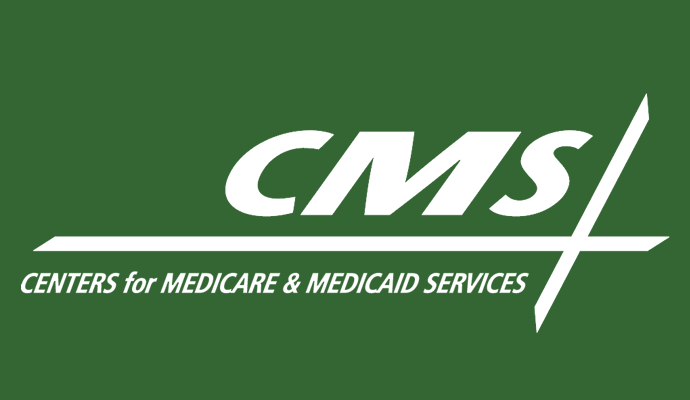CMS Proposes $2.5B IPPS Rate Hike, With Eye on Rural, Health Equity
In addition to IPPS rate increases, the rule would also add physician residency slots, incorporate health equity measures to hospital programs, and repeal some price transparency reporting.

Source: Xtelligent Healthcare Media/Centers for Medicare and Medicaid Services
- CMS is proposing to increase Medicare hospital inpatient rates by $2.5 billion next fiscal year, in addition to bolstering the rural healthcare workforce and health equity reporting.
The rate increase would apply to the Inpatient Prospective Payment System (IPPS) starting Oct. 1, 2022, and is based on a projected hospital market basket update of 2.5 percent, plus a 0.5 percentage points adjustment required by law and less a 0.2 percentage point productivity adjustment, according to the proposed Inpatient Prospective Payment System (IPPS) rule for FY 2022.
Other proposed policies would also boost IPPS rates next year, including the extensions of treatment add-on payments for 14 new technologies from before the pandemic and new COVID-19 treatments, as well as implementation of the imputed floor wage for low wage index hospitals.
These and other policies would increase payment by a total of $3.4 billion, 0r 2.8 percent, in FY 2022.
However, projected decreases in Medicare disproportionate share hospital (DSH) payments and Medicare uncompensated care payments would offset some increases from other proposed policies. Specifically, CMS projects the payments to decrease by about $0.9 billion next year.
READ MORE: Hospitals Increasingly Billing Inpatient Stays at Highest Severity
In addition to IPPS rates, CMS is proposing to add 1,000 physician residency slots to qualifying hospitals in FY 2022 to support the rural healthcare workforce. According to the proposed rule, CMS would phase in the additional slots over the next five years to entice more health professionals to work in rural hospitals and underserved areas.
The additional slots would require approximately $0.3 billion in additional funding, the rule states.
Nearly half of rural hospitals are operating in the red after rapid spread of COVID-19 and at least 450 facilities are at risk of closing, according to a recent study published by the Chartis Center for Rural Health.
“Hospitals are often the backbone of rural communities – but the COVID-19 pandemic has hit rural hospitals hard, and too many are struggling to stay afloat,” HHS Secretary Xavier Becerra said in an announcement. “This rule will give hospitals more relief and additional tools to care for COVID-19 patients and it will also bolster the health care workforce in rural and underserved communities.”
Becerra also highlighted the administration’s commitment to addressing another key issue exacerbated by the COVID-19 pandemic: health inequity.
READ MORE: CDC: 1 in 11 COVID-19 Inpatients Experience a Hospital Readmission
In the proposed rule, the agency is seeking comment on how to leverage diverse datasets that include information on patient race, Medicaid and Medicaid dual eligible status, disability status, gender and sexual orientation, and socioeconomic status, among other measures.
The agency would like to know methodological approaches for advancing health equity through better quality measurement and value-based purchasing programs.
CMS also plans to leverage value-based purchasing programs to accelerate COVID-19 recovery, according to the proposed rule.
If finalized, the rule would incorporate the COVID-19 Vaccination Coverage among Healthcare Personnel (HCP) Measure to the Hospital Inpatient Quality Reporting Program and PPS-Exempt Cancer Hospital Quality Reporting (PCHQR) Program.
CMS is also proposing measure suppression across several hospital quality reporting and value-based purchasing programs that would allow CMS to suppress the use of measure data if COVID-19 has impacted measure performance. The policy would apply to the Hospital Readmissions Reduction Program (HRRP), Hospital-Acquired Condition (HAC) Reduction Program, and Hospital Value-Based Purchasing (VBP) Program.
READ MORE: CMS Finalizes FY 2021 Inpatient Prospective Payment System Rule
The proposed rule also included quality reporting changes to all three of the programs.
Another major provision in the proposed rule is the repeal of a Trump-era requirement that hospitals report Medicare Advantage (MA) rates on Medicare cost reports.
If finalized, CMS would no longer seek the collection of median payer-specific negotiated charge that the hospital has negotiated with all of its MA organization payers.
The proposal comes as hospitals struggle to comply with other price transparency requirements that mandate the public disclosure of payer-negotiated rates.
The American Hospital Association (AHA) said in a statement last night that repealing the requirement is a step in the right direction.
“We have long said that privately negotiated rates take into account any number of unique circumstances between a private payer and a hospital and their disclosure will not further CMS's goal of paying market rates that reflect the cost of delivering care,” the Association’s executive vice president Tom Nickels stated. “We once again urge the agency to focus on transparency efforts that help patients access their specific financial information based on their coverage and care.”
The leading hospital group also applauded the extension of new COVID-19 treatment add-on payments and new Medicare-funded medical residency positions.
“The AHA has long advocated for increasing the number of Medicare-funded residency slots to help ease current physician shortages and bolster the foundation of our health care system,” Nickels said.
